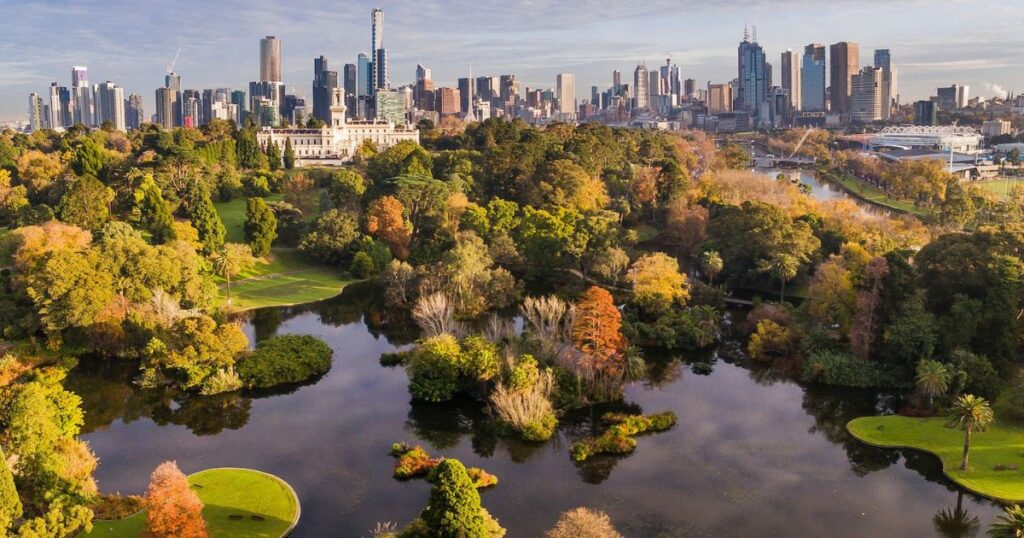The Royal Botanic Gardens are renowned for their vast collections of plant species, historical significance, and contributions to botanical research. Established to advance knowledge of plants, these gardens serve as both a sanctuary for rare flora and a center for scientific study. This article will delve into the multifaceted world of the Royal Botanic Gardens, exploring their history, collections, educational roles, and much more.
Historical Context of Royal Botanic Gardens
Founding and Early History
The Royal Botanic Gardens trace their origins to the 18th century, initiated by royal patronage and the scientific curiosity of the Enlightenment period. Initially serving as a medicinal plant garden, they quickly evolved into a center for botanical research and conservation.

Evolution Over Centuries
Over the centuries, the Royal Botanic Gardens expanded both in size and scope. New gardens were established, and existing ones were enhanced with exotic plant species collected from global expeditions. These developments mirrored the growing interest in botany and horticulture during the Victorian era.
Milestones and Achievements
The gardens have celebrated numerous milestones, including the introduction of significant plant species, groundbreaking botanical discoveries, and contributions to global conservation efforts. They have been instrumental in preserving endangered species and promoting sustainable practices.
Geographical Information
Location and Layout
The Royal Botanic Gardens are located in key cities around the world, including London (Kew Gardens), Sydney, and Melbourne. Each garden boasts unique landscapes, meticulously designed to showcase diverse plant collections.
Climate and Environment
The gardens are situated in temperate climates, ideal for cultivating a wide variety of plant species. Controlled environments, such as greenhouses and conservatories, allow for the growth of tropical and subtropical plants.
Seasonal Highlights
Each season brings a new spectacle to the gardens. Spring blossoms, summer foliage, autumnal colors, and winter displays offer visitors year-round beauty and interest.
Collections and Biodiversity
Plant Species
The Royal Botanic Gardens house an extensive range of plant species, from common garden plants to rare and endangered flora. This diversity represents different ecosystems, including tropical rainforests, deserts, and temperate woodlands.
Specialized Gardens
Specialized gardens within the Royal Botanic Gardens, such as the Rose Garden, Alpine Garden, and Medicinal Garden, provide focused collections that highlight specific plant groups and their uses.
Conservation Efforts
The gardens play a crucial role in conservation, participating in global initiatives to protect endangered species and restore degraded habitats. They are also involved in seed banking and plant reintroduction programs.
Educational Role
Visitor Programs
The gardens offer a variety of educational programs for visitors, including guided tours, workshops, and lectures. These programs aim to enhance public understanding of plant science and conservation.
School and University Partnerships
Collaborations with schools and universities facilitate hands-on learning experiences and support botanical research. Students of all ages can engage with plant science through tailored educational initiatives.
Research and Development
The Royal Botanic Gardens are centers for botanical research, conducting studies on plant genetics, ecology, and taxonomy. Their findings contribute to the broader scientific community and inform conservation strategies.
Must-Visit Attractions
Iconic Structures
Key structures within the gardens, such as the Palm House, Temperate House, and the Pagoda at Kew Gardens, are architectural marvels and important horticultural spaces. These buildings provide ideal conditions for growing a diverse range of plants.
Seasonal Festivals
Annual festivals, such as the Orchid Festival, Cherry Blossom Festival, and Christmas at the Gardens, attract visitors with themed displays and activities. These events celebrate the beauty of plants and the changing seasons.
Hidden Gems
Beyond the main attractions, the gardens contain hidden gems like secluded woodland areas, historical ruins, and tranquil lakes. These lesser-known spots offer peaceful retreats for visitors.
Activities and Experiences
Guided Tours
Guided tours, led by knowledgeable staff, provide in-depth insights into the gardens’ history, collections, and conservation efforts. These tours cater to different interests, from botanical enthusiasts to casual visitors.
Interactive Exhibits
Interactive exhibits and displays engage visitors with hands-on learning opportunities. Digital installations, touchscreens, and augmented reality experiences enhance the educational value of these exhibits.
Volunteer Opportunities
Volunteering at the Royal Botanic Gardens offers a chance to contribute to their maintenance and educational programs. Volunteers assist with gardening, visitor services, and conservation projects.
Travel Tips
Planning Your Visit
To make the most of your visit, plan ahead by checking the gardens’ website for opening hours, ticket prices, and special events. Consider visiting during off season times for a more relaxed experience.
Accessibility
The gardens are committed to accessibility, offering facilities and services for visitors with disabilities. Accessible paths, mobility aids, and detailed information on accessibility features ensure an inclusive visit.
Accommodation and Dining
Nearby accommodation options range from budget-friendly hotels to luxury stays. On-site dining facilities provide a range of options, from casual cafes to fine dining restaurants, catering to diverse tastes.
Safety and Health Precautions
Weather Preparedness
Be prepared for changing weather conditions by taking appropriate clothing and accessories. Sunscreen, hats, and rain gear can enhance your comfort during your visit.
Health Guidelines
Follow any health and safety guidelines provided by the gardens, especially during times of heightened public health concerns. These may include social distancing measures, mask-wearing, and hygiene practices.
Emergency Services
Familiarize yourself with the location of first aid stations and emergency contact points within the gardens. Staff are trained to assist with medical emergencies and other incidents.
Budget Planning
Cost-Effective Tips
Save on costs by purchasing tickets online in advance, taking advantage of discounts for students, seniors, and families, and planning picnics instead of dining out. Memberships can also offer long-term savings for frequent visitors.
Souvenir Shopping
Gift shops within the gardens offer a variety of souvenirs, including plant-related merchandise, books, and locally made crafts. Budget for these items if you plan to take home a memento of your visit.
Event Participation
Attending special events and workshops may require additional fees. Check the gardens’ schedule and plan your budget accordingly to enjoy these unique experiences.
Local Cuisine
Garden Cafes
On-site cafes provide a range of dining options, from light snacks to full meals. Many cafes use locally sourced ingredients and offer vegetarian and vegan options.
Nearby Restaurants
Explore the culinary delights of nearby areas, which often feature restaurants serving local and international cuisine. Dining out can complement your visit to the gardens with a taste of the local food scene.
Conclusion
The Royal Botanic Gardens are more than just beautiful places to visit; they are vital centers for education, conservation, and scientific research. By exploring these gardens, visitors gain a deeper appreciation for the diversity and importance of the plant kingdom. Whether you’re a nature lover, a student, or simply looking for a peaceful retreat, the Royal Botanic Gardens offer something for everyone.
Read more at abbottours.com
